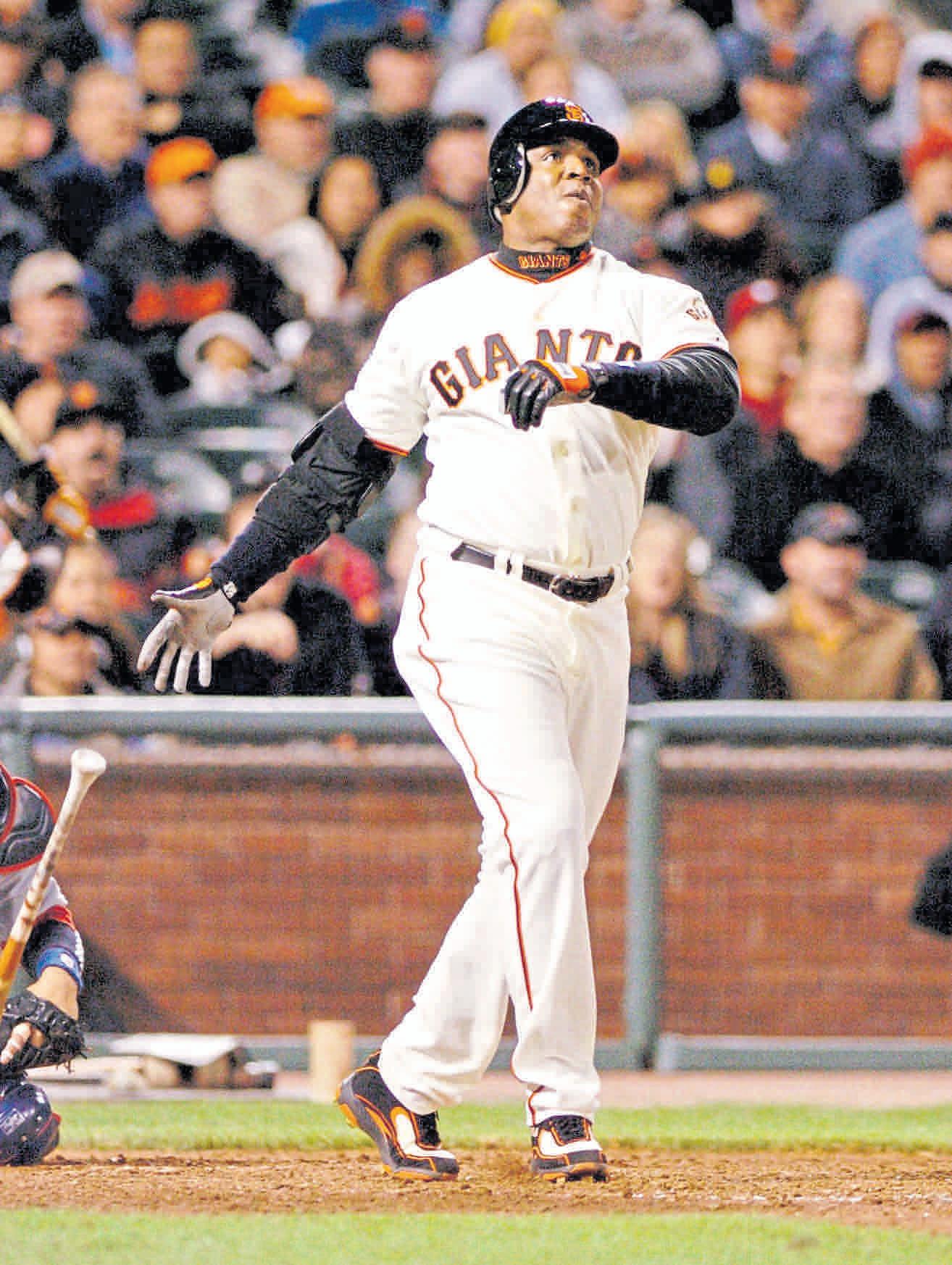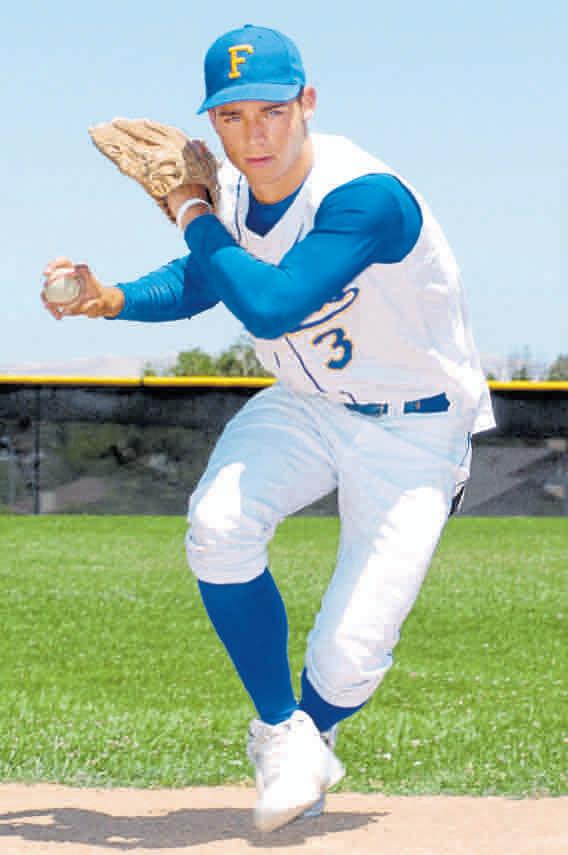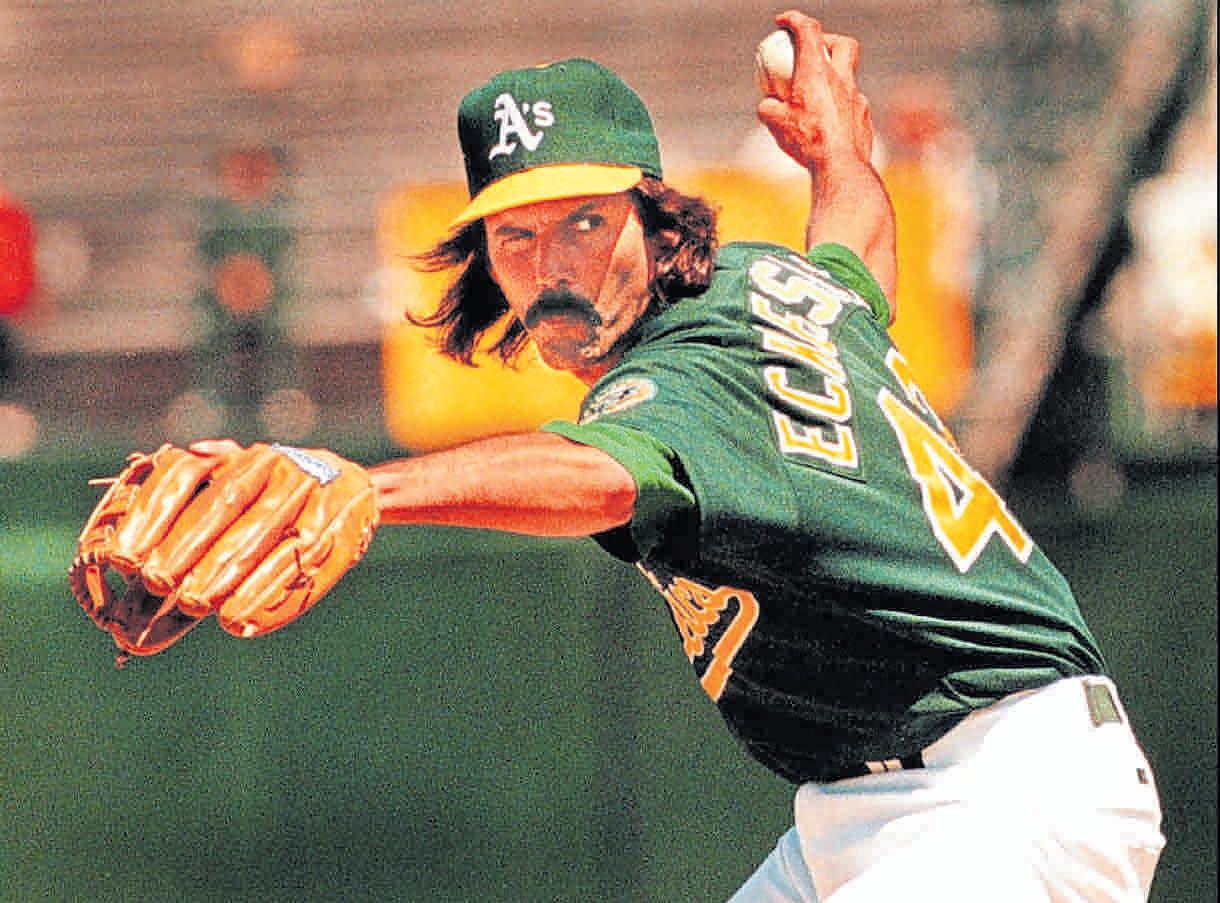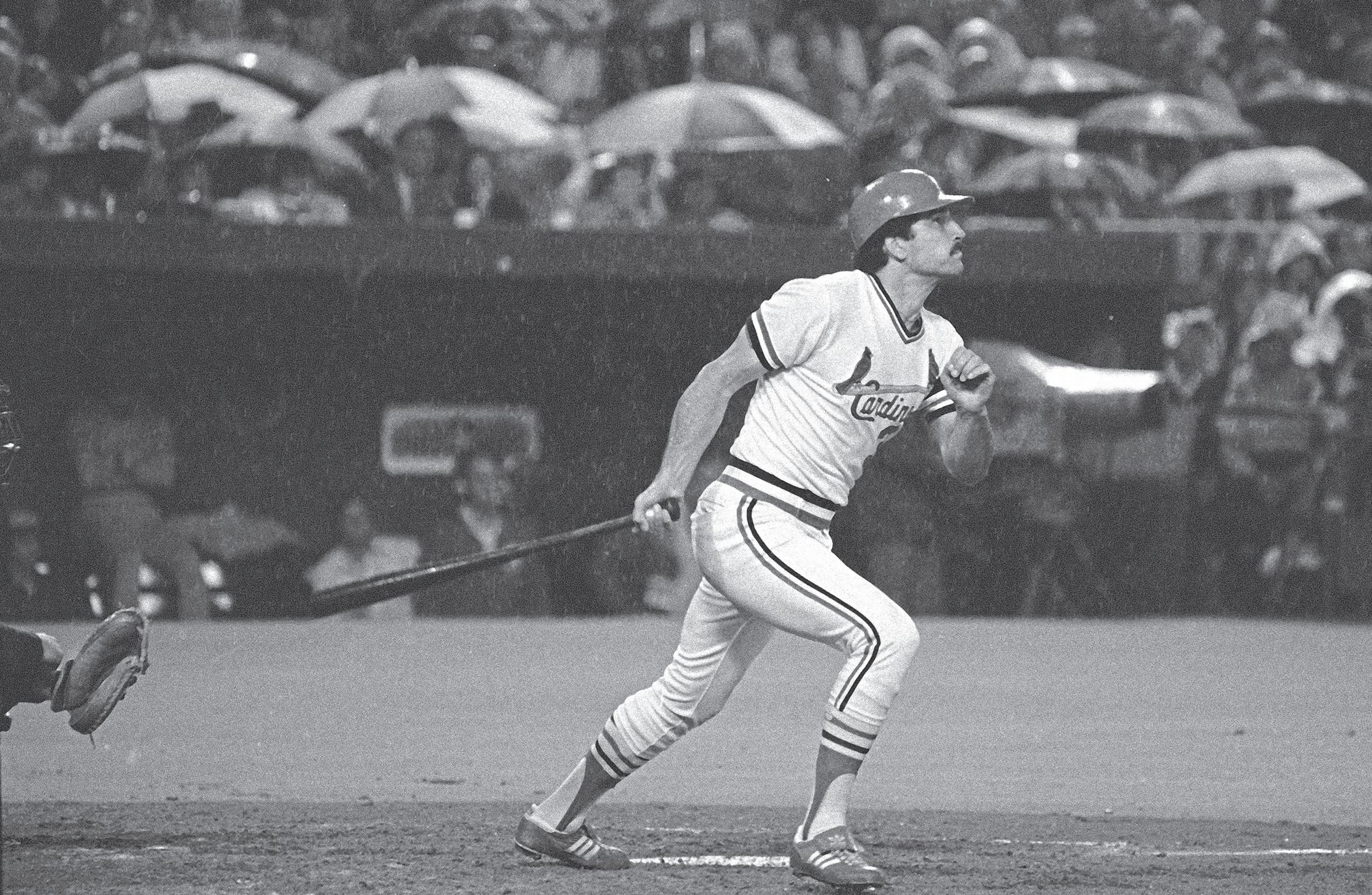
16 minute read
Players
The words were delivered more than 30 years ago on a movie set in an Iowa cornfield. But they resonate just as deeply today.
“America has rolled by like an army of steamrollers. It has been erased like a blackboard, rebuilt and erased again. But baseball has marked the time,’’ James Earl Jones’ character, Terrence Mann, told Kevin Costner’s Ray Kinsella during their climactic scene in the iconic 1989 movie “Field of Dreams.”
The game of baseball is part of our past, Mann added, then tugged at the heartstrings by suggesting, “It reminds us of all that once was good and could be again.”
Let’s face it, it’s been a rough few years. Baseball’s never been perfect — the lockout this oseason was further proof of that — but it can be a terrific healer. Just look at how the Giants’ World Series runs in the early 2010s captivated the region, and they did it again during last summer’s unexpected breakthrough. The A’s ruled not only the Bay Area but were the biggest rock stars of the baseball world in the late 1980s. Who knows what the game would look like today if the Swingin’ A’s of the 1970s with their collection of colorful characters — and uniforms — never existed?
But this isn’t about the teams. Few regions in the world can claim to have a larger imprint on the game than our Bay Area. The collective total of trophies, plaques and other hardware from area products could stretch a span of the Bay Bridge. Probably with a little left over.
Hall of Famers? We’ve produced plenty of them. MVPs and Cy Young Award winners? Too many to count. The all-time home run king and the stolen base king grew up on opposite sides of the bay, and the guy who struck out more batters than any other left-handed pitcher is from Livermore. Bay Area-produced players dominated the early 20th century’s dead ball era, were in the starting lineup of the first-ever All-Star Game and have been at the center of some of the biggest on- and o -field moments in baseball history. ESPN recently ranked the top 100 players of all-time, and five of the top 24 players on that list learned the game on sandlots across the Bay Area.
We’re thrilled to share our nostalgic look at the legacy of baseball in the Bay Area through the names and achievements of our hometown heroes.
Similar to the Hall of Fame, we had a few guidelines to go by. Players who were born in the Bay Area and moved away before their formative years aren’t included. The same goes for all the players from the tremendous colleges in our area who grew up elsewhere.
What we ended up with isn’t an all-time best list. Sure, all the stars are accounted for. But so are players who left an indelible mark on the sport as groundbreakers, one-hit wonders or unforgettable personalities.
Just our way of helping to show how Bay Area baseball has marked the time.
Wally Berger
San
Francisco
The Mission High product was the National League’s starting center fielder for the first two All-Star Games and was one of the league’s top power hitters in the early 1930s. He hit 38 home runs in 1930, a rookie record that stood until Mark McGwire hit 49 in 1987. And he was teammates with Hall of Famer Joe Cronin on the 1922 Mission High team that won the city high school championship.
Barry Bonds finished his career with 762 home runs.
Barry Bonds
San Mateo
This Serra High alum is MLB’s single-season and career Home Run King, but suspicions of performance-enhancing drug use have kept him out of the Hall of Fame. Bonds was a seven-time MVP and 14-time All-Star with the Pirates and the Giants. He finished his career with 762 home runs and at his peak was such a feared slugger that he was intentionally walked with the bases loaded. ESPN recently listed him as the No. 8 player in MLB history.
Ernie Broglio
El Cerrito
He was a 20-game winner with the Cardinals in 1960, but the El Cerrito High product is best known for being the guy the Cubs got for future Hall of Famer Lou Brock in one of the most lopsided trades in MLB history. Broglio won seven more games before shoulder injuries ended his career.
Glenn Burke
Berkeley
The former Berkeley High star never became “another Willie Mays” as Mays’ contemporary and then-Dodgers coach Jim Gilliam once predicted, but he did leave an impressive legacy. Burke, who played for the Dodgers and A’s from 1976-79, was the first MLB player to come out as gay to teammates and ownership while he was an active player. Burke, who died in 1985 at the age of 42, also is credited with inventing the high five on the final day of the 1977 regular season. He ran onto the field with his arm raised to congratulate Dodgers teammate Dusty Baker, who had just hit his 30th home run, and Baker slapped Burke’s hand, creating a cultural phenomenon.


Joe Charboneau
Santa
The 1980 American League Rookie of the Year played just 70 games in parts of two seasons and is the oft-cited example of the sophomore jinx. The Buchser High alum was an instant sensation in
Cleveland for his production — he hit a .289 average with 23 home runs and 87 RBI — as well as his larger-than-life persona and backstory. Charboneau said he boxed bare-knuckled in box cars and warehouses to earn money as a teen and was able to drink beer through his nose because all the cartilage was removed after one of three times it was broken.
Brandon Crawford Pleasanton
The Foothill High alum grew up a Giants fan, and after last season, no shortstop has played more games for the franchise than the three-time All-Star. Debuting in 2011, he hit a grand slam in his first game, won his fourth Gold Glove last season and finished fourth in the NL MVP race. He was also a key contributor to two World Series championship teams.
Joe Cronin San Francisco
Cronin won prep city championships at Mission High and Sacred Heart (he transferred after Mission High burned down in 1922) before embarking on a Hall of Fame MLB career that included being a star shortstop, manager, general manager, AL president and member of the HOF’s board of directors. In all, the seven-time
All-Star (he started for the AL in the first-ever game in 1933) spent nearly 50 years in baseball and, remarkably, was never fired or out of work.
Joe DiMaggio San Francisco
The most recognizable player of his era remains a cultural icon — it doesn’t hurt that he was married to Marilyn Monroe — as well as being one of the greatest players of all time. “The Yankee Clipper” did it all in a Hall of Fame career that saw him win three MVP awards and make the All-Star team in each of his 13 seasons. He played his entire career with the Yankees, winning nine World Series titles and 10 AL pennants. His 56-game hitting streak in 1941 remains a MLB record. He dropped out of Galileo High and caught the attention of the Yankees while playing with the San Francisco Seals.
Dennis Eckersley Fremont

The first-ballot Hall of Famer from Washington High was a successful starter — he was a 20-game winner and pitched a no-hitter — but is best known as the dominating closer for his hometown A’s. “Eck” was the
AL’s Cy Young winner and MVP in 1992. He had two other top-5 MVP finishes and was runner-up for the Cy Young in 1988. He’s the first player in history with a 20win and 50-save season.
Ferris Fain Oakland
The five-time All-Star first baseman won consecutive AL batting titles in 1951 and 1952 but only played nine seasons because of knee injuries. The three-sport star at Roosevelt High still ranks 15th all-time in career on-base percentage (.424) but also was known for his brushes with the law, including getting busted in 1988 at the age of 66 for growing more than 400 pot plants at his Placerville home.
Curt Flood Oakland
The three-time All-Star batted over .300 in six of his 15 seasons and was considered by some during the era a superior defensive center fielder to Willie Mays (he won the Gold Glove seven consecutive seasons, from 19631969 with the Cardinals). But he’s best known for sparking the free agency movement. Flood sat out the 1970 season after refusing to report to the Phillies as part of a trade. He sued MLB and lost but paved the way for greater players’ rights. He played in the same McClymonds outfield with Vada Pinson and Frank Robinson but graduated from Oakland Tech.
Jim Fregosi
San Mateo
This six-time All-Star from Serra High was one of the top all-around shortstops in the AL during the late 1960s and early 1970s and managed for 15 seasons, leading the Phillies to the 1993 World Series. He was a key part of the 1971 trade that brought Nolan Ryan from the Mets to the Angels.
Elijah ‘Pumpsie’ Green
Richmond
The El Cerrito High product broke the Boston Red Sox’s color barrier, 22 years after Jackie Robinson debuted with the Dodgers. Green spent parts of five seasons in the majors, and when he made his MLB debut on July 21, 1959, he became the first Black player for the Red Sox. Boston was the final pre-expansion MLB team to integrate. Green worked at Berkeley High for more than 20 years after his retirement from baseball.
Harry Heilmann
San Francisco
The Hall of Fame outfielder debuted with the Detroit Tigers at 19, just two years out of Sacred Heart, and almost immediately was one of the best hitters of any era. He led the AL in batting four times from 1921-27, with averages of .394, .403, .398 and .396. He was one of six AL players to hit .400, and his career average of .342 is the 12th highest in Major League history and third among right-handed batters. Heilmann hit over .300 for 12 consecutive seasons.
Rickey Henderson Oakland
Born on Christmas Day, Henderson was the gift that kept on giving. He is the single-season and career stolen base king and the greatest leado hitter in MLB history. The former Oakland Tech student was a first-ballot Hall of Famer who played for nine teams over 25 seasons, including four separate stints with his hometown A’s. The ten-time All-Star outfielder was the AL MVP in 1990 and catalyst for World Series winners in Oakland (1989) and Toronto (1993). He had power to go with his speed, hitting 297 career home runs. His 81 home runs to lead o a game is an MLB record.
Keith Hernandez Millbrae
The Capuchino High and College of San Mateo grad turned into one of the all-time great draft success stories. The 42nd-round pick won 11 straight Gold Gloves at first base, was a five-time AllStar, shared the NL MVP in 1979 and won World Series titles with the Cardinals (1982) and the Mets (1986). He appeared in “The Boyfriend” episode of Seinfeld, which TV Guide once ranked No. 4 on the list of the greatest TV episodes of all time.
Harry Hooper Oakland
Hooper wasn’t introduced to baseball until he left his family’s Santa Clara farm to attend St. Mary’s High, but he blossomed into one of the best defensive right fielders and leado hitters of the dead ball era. He was the only MLB player to lead o both games of a doubleheader with a home run until Rickey Henderson accomplished the feat 80 years later. After winning four World Series with the Red Sox from 1912-18, he served as the postmaster for Capitola for more than 20 years.
Jackie Jensen
Oakland
The three-time All-Star from Oakland High won a World Series with the Yankees as a rookie and was the AL MVP with the Red Sox in 1958. He retired after 1961 at the age of 34 because of a fear of flying. One of the most accomplished college athletes in Bay Area history, “The Golden Boy” led Cal to the inaugural College World Series in 1947 and a year later, led the Bears football team to the Rose Bowl. Jensen finished fourth in the Heisman Trophy voting after becoming Cal’s first 1,000-yard rusher that season.
St. Louis Cardinals’ Keith Hernandez watches a home run take flight in 1982. During his career, the Millbrae native won 11 straight Gold Gloves.

Randy Johnson Livermore
The “Big Unit” dominated — and intimidated — hitters at Livermore High, USC and early in his pro career with a blazing fastball and erratic control. But the 6-foot10 lefty put it together after a 1992 conversation with Nolan Ryan, winning at least 17 games in eight of the next 10 seasons, earning him five Cy Young Awards. The first-ballot Hall of Famer won his 300th career game with the Giants in 2009 and ranks second to Ryan in career strikeouts.
George ‘High Pockets’ Kelly
San Francisco
Kelly helped the New York Giants win four consecutive NL pennants as a gifted defensive first baseman and one of the best hitters of the early 1920s, leading the NL in home runs once and in RBIs twice. The San Francisco native dropped out of school to play semi-pro in Oakland and was in the majors at the age of 19. He was voted into the Hall of Fame in 1973.
Mark Langston
Santa Clara
Langston went to San Jose State after the Cubs drafted him in the 15th round out of Buchser High at the age of 17 and was the Mariners’ second-round pick three years later. He led the AL in strikeouts as a rookie, was a four-time All-Star and pitched a combined no-hitter in 1990. Won seven Gold Gloves and had one of the best picko moves of all time — when he retired, his 91 career picko s were an MLB record.
Cookie Lavagetto Oakland
Former Athletics star Carney Lansford has played in both the Little League and MLB World Series. AP PHOTO

Carney Lansford
Santa Clara
The former Wilcox High star achieved a rare accomplishment by playing in both the Little League and MLB World Series, reaching Williamsport in 1969 with Briarwood LL, then playing in three World Series with the A’s, winning one in 1989. He won a batting title in 1981, just missed a second in 1989 and finished with a career batting average of .290.
The former Oakland Tech High student was discovered during a semi-pro game and went on to become a four-time All-Star and play in two World Series with the Brooklyn Dodgers. Lavagetto spoiled what would have been the first no-hitter in World Series history, collecting a walk-o , pinch-hit double with two outs in the bottom of the ninth inning in Game 4 of the 1947 Series against the Yankees. That was the final hit of his MLB career.
Tony Lazzeri San Francisco
The Hall of Fame second baseman was part of the Yankees’ famed “Murderers’ Row” in the late 1920s, along with Babe Ruth, Lou Gehrig and Bob Meusel. The San Francisco native dropped out of Galileo High but was in the majors with the Yankees by the age of 22 and finished 10th in MVP voting as a rookie. He drove in over 100 runs seven times and was a member of the original AL All-Star team in 1933.
Ernie Lombardi
Oakland
The Hall of Fame catcher from McClymonds High was an eighttime All-Star who hit over .300 in 10 seasons. The two-time NL batting champ caught for Johnny Vander Meer’s back-to-back no-hitters in 1938.
Billy Martin
Berkeley
Martin had a well-earned reputation as a fighter before he arrived at Berkeley High, and he kept swinging throughout a colorful and successful career as a player and manager. He was a key member of the Yankees’ 1950’s dynasty — he was MVP of the 1953 World Series — and also Mickey Mantle’s roommate and carousing partner. As a manager, he had famous battles with George Steinbrenner, Reggie Jackson and a Minnesota marshmallow salesman. He was typically an initial success — he revived the A’s with his BillyBall teams of the early 1980s, one of his five division winners — but at every stop was fired or left amid o -field controversy.
Gil McDougald
San Francisco
McDougald was a basketball star at Commerce High and didn’t make the varsity baseball team until he was a senior, but he wound up being a key piece to the Yankees’ 1950s dynasty, playing second, third and shortstop. He was the AL Rookie of the Year in 1951 (Mickey Mantle’s rookie season and Joe DiMaggio’s last) and was a six-time All-Star and part of five World Series winning teams. He retired in 1960 at the age of 32.
Joe Morgan

Oakland
Bill Haller and Athletics manager Billy Martin argue during a game in 1982. RUSS

A key piece of Cincinnati’s “Big Red Machine” of the 1970s, the Hall of Famer from Castlemont High was by any measure one of the greatest second basemen in MLB history. He was a two-time MVP, 10-time All-Star and won five Gold Gloves before spending more than two decades as a broadcaster. He was elected to the Hall of Fame in 1990.
Daniel Nava
San Carlos
Nava hit the first pitch he saw in the majors for a grand slam in 2010 with the Red Sox, punctuating an improbable journey worthy of a movie. Undersized at St. Francis High, where he was a skilled defensive outfielder but rarely batted, he was cut as a walk-on at Santa Clara and served as the team manager. He went to the College of San Mateo, got bigger and became a JC All-American and returned to SCU, where he led the West Coast Conference in hitting but was not drafted. A year after being cut, he was rated the No. 1 prospect in the Independent League, and the Red Sox bought his rights for $1. Two years later, he made his dramatic debut and spent parts of seven seasons in the majors, winning a World Series ring with Boston.
Lefty O’Doul
San
Francisco
The two-time batting champ and participant in the inaugural AllStar game has the highest career batting average (.349) of any player eligible for MLB Hall of Fame who is not enshrined but was inducted into the Japanese baseball Hall of Fame for his work promoting the game there before and after World War II. The hometown hero has a drawbridge near the San Francisco ballpark named after him. If the Tokyo Giants uniforms look familiar, it’s because the former New York Giant designed them. He managed the San Francisco Seals and was credited with developing Joe DiMaggio.
Vada Pinson
Oakland
A trumpet player in the McClymonds High band, Pinson was persuaded to follow a career path in baseball instead of music and was one of the NL’s top all-around players in the 1960s. The two-time All-Star center fielder played 18 seasons and had more hits in his first five full seasons (985) than Hall of Fame contemporaries Stan Musial, Willie Mays, Hank Aaron and Frank Robinson, his high school teammate.
Dave Righetti
San Jose
The Pioneer High product was the Giants pitching coach from 2000-17 and the chief architect of the dominating sta s that helped win three World Series titles after a successful career that saw the left-hander become the first MLB player to pitch a no-hitter and lead the league in saves during his career. “Rags” was the AL Rookie of the Year in 1981 as a starter and pitched a no-hitter for the Yankees on the 4th of July in 1983 but became New York’s closer in 1984. He made two All-Star teams as a reliever and set a then-MLB record with 46 saves in 1986.
Frank Robinson
Oakland
The McClymonds High alum left indelible marks as a player and a manager and was elected to the Hall of Fame as soon as he became eligible in 1982. As a player, Robinson was named Rookie of the Year, won MVP awards in both leagues, had a Triple Crown season, won a Gold Glove in right field and was a World Series and All-Star Game MVP. In 1975, he became the first Black manager in the majors and managed four teams in all, including the Giants.
Jimmy Rollins
Alameda
The former Encinal High star was the leado man for Phillies teams that won five straight division titles, two NL pennants and a World Series from 2007-11. Rollins was a three-time All-Star, won a Silver Slugger and four Gold Gloves. He was on the Hall of Fame ballot for the first time this year and received 9.4 percent of the votes to remain eligible.
C.C. Sabathia
Vallejo
Rated the top prospect in Northern California while at Vallejo
High, the big lefty lived up to the hype. He went 17-5 as a 20-yearold rookie with Cleveland and retired after the 2019 season with the third-most strikeouts by a left-hander in MLB history and tied with Bob Gibson for the second-most wins (251) by a Black pitcher. The six-time All-Star led the majors in wins twice and won the 2007 AL Cy Young award.
Marcus Semien
El
Cerrito
The St. Mary’s High alum followed his parent’s footsteps to Cal (dad, Damien, played football there) and enters this season as one of the majors’ top second basemen. He finished third in the MVP race with the A’s in 2019. Last season, he signed with the Blue Jays, changed positions and wound up starting the All-Star Game and setting a single-season record for second basemen with 45 homers. Signed a $175 million deal with the Rangers this winter.
Willie Stargell
Alameda
Teammates Frank Robinson, left, and Brooks Robinson celebrate after leading the Orioles to a 5-2 win in the opening game against the Los Angeles Dodgers in the World Series in Los Angeles, in 1966.

Stargell wasn’t even the best player on his Encinal High team, but he developed into one of the NL’s most feared sluggers in the 1960s and ’70s and was a first-ballot Hall of Famer. Stargell, who has a street named after him in Alameda, was a seven-time All-Star and had six top-10 MVP finishes (he was second twice) before — at the age of 39 and as the leader of the “We Are Family” Pirates — he shared the award with Keith Hernandez in 1979.
Dave Stewart
Oakland
Stewart joined his hometown A’s at the age of 29 and became one of the most dominating — and intimidating — pitchers of the late 1980s and early ‘90s. The former St. Elizabeth High student went 10-3 in 16 post-season starts with the A’s and Blue Jays, winning both of his starts against the Giants in the 1989 World Series. He had four straight 20-game seasons and top-4 AL Cy Young Award finishes from 1987-90.
Troy Tulowitzki
Sunnyvale
The five-time NL All-Star was one of the top all-around shortstops when he was healthy. In 13 seasons, he played in at least 100 games just eight times and hit 20 or more home runs in seven of those seasons. He was a baseball and basketball star at Fremont High and the seventh overall pick in the 2005 draft by the Rockies after starring at Long Beach State. Two years later, as a 22-year-old rookie, he helped lead Colorado to its only World Series appearance.
Dontrelle Willis
Alameda
In the early 2000s, the “D-Train” was one of the game’s biggest stars and dominant pitchers. The former Encinal High student with the unorthodox delivery was an immediate sensation as a 21-yearold rookie in 2003, making the All-Star team, helping lead the Marlins to a World Series title and











